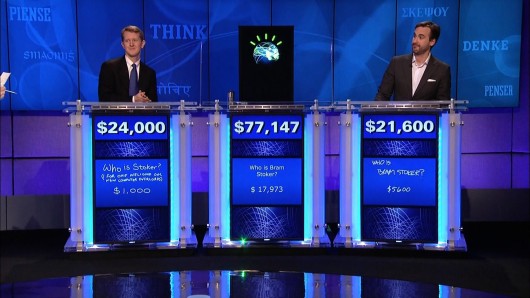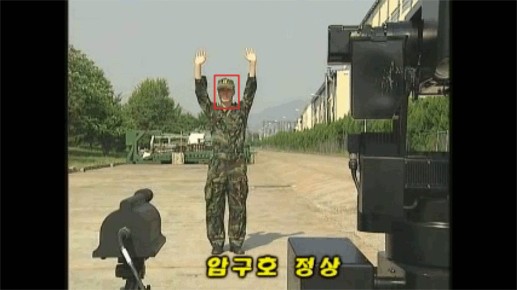
The recently concluded DARPA Robotics Challenge (DRC), held this past week at a NASCAR racetrack near Homestead, Florida, seems to have had a refreshingly sobering effect on the media coverage of advances in robotics. A field of sixteen competitors, the victors of earlier trials (it was to be seventeen, but ‘travel issues’ prevented the Chinese team from participating), the teams represented the state of the art internationally in the development of mobile, and more specifically ‘legged’ robots. The majority of the teams worked with machines configured as upright, bipedal humanoids, while two figured their robots as primates (Robosimian and CHIMP), and one as a non-anthropomorphised ‘hexapod’. The Challenge staged a real-time, public demonstration of the state of the art; one which, it seems, proved disillusioning to many who witnessed it. For all but the most technically knowledgeable in the audience, the actual engineering achievements were hard to appreciate. More clearly evident was the slowness and clumsiness of the robots, and their vulnerability to failure at what to human contenders would have proven quite unremarkable tasks. A photo gallery titled Robots to the Rescue, Slowly is indicative, and the BBC titles its coverage of the Challenge Robot competition reveals rise of the machines not imminent.
Reporter Zachary Fagenson sets the scene with a representative moment in the competition:
As a squat, red and black robot nicknamed CHIMP gingerly pushed open a spring-loaded door a gust of wind swooped down onto the track at the Homestead-Miami Speedway and slammed the door shut, eliciting a collective sigh of disappointment from the audience.
In the BBC’s video coverage of the event, Dennis Hong, Director of the Virginia Tech Robotics Lab, tells the interviewer: “When many people think about robots, they watch so many science fiction movies, they think that robots can run and do all the things that humans can do. From this competition you’ll actually see that that is not the truth. The robots will fall, it’s gonna be really, really slow…” and DARPA Director Arati Prabhaker concurs “I think that robotics is an area where our imaginations have run way ahead of where the technology actually is, and this challenge is not about science fiction it’s about science fact.” While many aspects of the competition would challenge the separateness of fiction and fact (not least the investment of its funders and competitors in figuring robots as humanoids), this is nonetheless a difference that matters.
These cautionary messages are contradicted, however, in a whip-lash inducing moment at the close of the BBC clip, when Boston Dynamics Project Manager Joe Bondaryk makes the canonical analogy between the trials and the Wright brothers’ first flight, reassuring us that “If all this keeps going, then we can imagine having robots by 2015 that will, you know, that will help our firefighters, help our policemen to do their jobs” (just one year after next year’s Finals, and a short time frame even compared to the remarkable history of flight).
The winning team, University of Tokyo’s spin-out company Schaft (recently acquired by Google), attributes their differentiating edge in the competition to a new high-voltage liquid-cooled motor technology making use of a capacitor rather than a battery for power, which the engineers say lets the robot’s arms move and pivot at higher speeds than would otherwise be possible. Second and fourth place went to teams that had adopted the Boston Dynamics (another recent Google acquisition) Atlas robot as their hardware platform, the Florida Institute for Human and Machine Cognition (IHMC) and MIT teams respectively. (With much fanfare, DARPA funded the delivery of Atlas robots to a number of the contenders earlier this year.) Third place went to Carnegie Mellon University’s ‘CHIMP,’ while one of the least successful entrants, scoring zero points, was NASA’s ‘Valkyrie’, described in media reports as the only gendered robot in the group (as signaled by its white plastic vinyl body and suggestive bulges in the ‘chest’ area). Asked about the logic of Valkyrie’s form factor, Christopher McQuin, Nasa’s chief engineer for hardware development, offered: “The goal is to make it comfortable for people to work with and to touch.” (To adequately read this comment, and Valkyrie’s identification as gendered against the ‘neutrality’ of the other competitors, would require its own post.) The eight teams with the highest scores are eligible to apply for up to $1-million in funding to prepare for the final round of the Challenge in late 2014, where a winner will take a $2-million prize.
An article on the Challenge in the MIT Technology Review by journalist Will Knight includes the sidebar: ‘Why it Matters: If they can become nimbler, more dexterous, and safer, robots could transform the way we work and live.’ Knight thereby implies that we should care about robots, their actual clumsiness and unwieldiness notwithstanding, because if they were like us, they could transform our lives. The invocation of the way we live here echos the orientation of the Challenge overall, away from robots as weapons – as instruments of death – and towards the figure of the first responder as the preserver of life. Despite its sponsorship by the Defense Advanced Research Projects Agency (DARPA), the agency charged with developing new technology for the military, the Challenge is framed not in terms of military R&D, but as an exercise in the development of ‘rescue robots‘.
More specifically, DARPA statements, as well as media reports, position the Challenge itself, along with the eight tasks assigned to the robotics teams (e.g. walking over rubble, clearing debris, punching a hole in a drywall, turning a valve, attaching a fire hose, climbing a ladder), as a response to the disastrous melt down of the Fukushima-Daiichi nuclear power plant. (For a challenge to this logic see Maggie Mort’s comment to my earlier post ‘will we be rescued?’) While this begs the question of how robots would be hardened against the effects of nuclear radiation and at what cost (the robots competing in the challenge already costing up to several million dollars each), Knight suggests that if robots can be developed that are capable of taking on these tasks, “they could also be useful for much more than just rescue missions.” Knight observes that the robot of the winning team “is the culmination of many years of research in Japan, inspired in large part by concerns over the country’s rapidly aging population,” a proposition affirmed by DARPA Program Manager Gill Pratt who “believes that home help is the big business opportunity [for] humanoid robots.” Just what the connection might be between these pieces of heavy machinery and care at home is left to our imaginations, but quite remarkably Pratt further suggests “that the challenges faced by the robots involved in the DARPA event are quite similar to those that would be faced in hospitals and nursing homes.”
In an article by Pratt published early in December in the Bulletin of the Atomic Scientists titled Robot to the Rescue, we catch a further glimpse of what the ‘more than rescue’ applications for the Challenge robots might be. Pratt’s aspirations for the DARPA Robotics Challenge invoke the familiar (though highly misleading) analogy between the robot and the developing human: “by the time of the DRC Finals, DARPA hopes the competing robots will demonstrate the mobility and dexterity competence of a 2-year-old child, in particular the ability to execute autonomous, short tasks such as ‘clear out the debris in front of you’ or ‘close the valve,’ regardless of outdoor lighting conditions and other variations.” I would challenge this comparison on the basis that it underestimates the level of the 2 year old child’s competencies, but I suspect that many parents of 2 year olds might question its aptness on other grounds as well.
Having set out the motivation and conditions of the Challenge, in a section titled ‘Don’t be scared of the robot’ Pratt turns to the “broad moral, ethical, and societal questions” that it raises, noting that “although the DRC will not develop lethal or fully autonomous systems, some of the technology being developed in the competition may eventually be used in such systems.” He continues:
society is now wrestling with moral and ethical issues raised by remotely operated unmanned aerial vehicles that enable reconnaissance and projection of lethal force from a great distance … the tempo of modern warfare is escalating, generating a need for systems that can respond faster than human reflexes. The Defense Department has considered the most responsible way to develop autonomous technology, issuing a directive in November 2012 that carefully regulates the way robotic autonomy is developed and used in weapons systems. Even though DRC robots may look like those in the movies that are both lethal and autonomous, in fact they are neither.
The slippery slope of automation and autonomy in military systems, and the U.S. Defense Department’s ambiguous assurances about their commitment to the continued role of humans in targeting and killing, are the topic of ongoing debate and a growing campaign to ban lethal autonomous weapons (See ICRAC website for details.) I would simply note here the moment of tautological reasoning wherein ‘the tempo of modern warfare,’ presented as a naturally occurring state of the world, becomes the problem for which faster response is the solution, which in turn justifies the need for automation, which in turn increases the tempo, which in turn, etc.
In elaborating the motivation for the Challenge, Gill Pratt invokes a grab-bag of familiar specters of an increasingly ‘vulnerable society’ (population explosion with disproportionate numbers of frail elderly, climate change, weapons of mass destruction held in the wrong hands) as calling for, if not a technological solution, at least a broad mandate for robotics research and development:
The world’s population is continuing to grow and move to cities situated along flood-prone coasts. The population over age 65 in the United States is forecast to increase from 13 percent to 20 percent by 2030, and the elderly require more help in emergency situations. Climate change and the growing threat of proliferation of weapons of mass destruction to non-state actors add to the concern. Today’s natural, man-made and mixed disasters might be only modest warnings of how vulnerable society is becoming.
One implication of this enumeration is that even disaster can be good for business, and humanoid robotics research, Pratt assures us, is all about saving lives and protecting humans (a term that seems all-encompassing at the same time that it erases from view how differently actual persons are valued in the rhetorics of ‘Homeland Security’). The figure of the ‘warfighter’ appears only once towards the end of Pratt’s piece, and even there the robot’s role in the military is about preserving, not taking life. But many of us are not reassured by the prospect of robot rescue, and would instead call on the U.S. Government to take action to mitigate climate change, to dial down its commitment to militarism along with its leading role in the international arms trade, and to invest in programs to provide meaningful jobs at a living wage to humans, not least those engaged in the work of care. The robot Challenge could truly be an advance if the spectacle of slow robots would raise questions about the future of humanoid robotics as a project for our governments and universities to be invested in, and about the good faith of slippery rhetorics that promise the robot first responder as the remedy for our collective vulnerability.




